In spite of its history, always narrated as studded with inauspicious events, Calabria can be redeemed starting from its own “ruins.” Not only the archaeological ones, which are also immense, but also through a less stereotyped narrative and, above all, through some shrewd strategic choices that, at last, are being implemented first of all in Sibari, in the province of Cosenza. “There are places that hold primates of philosophical and spiritual thought-places, however, mysteriously destined to go from suffering to torment before they can rise above the ruins that have accumulated” (Domenico Nunnari, La Calabria spiegata agli italiani. The evil, the pride, the beauty of our Greece, Rubbettino, 2017).
But which Calabria do we venture to tell? “It was always difficult for me to explain what my region is,” said Corrado Alvaro in 1931 in a lecture in Florence. Perhaps, to this day, his statement would be enough to put us off, but it is an attempt that must be made every time in order to recalibrate the present history from an even “intentional” perspective (I refer to the “intentionale Geschichte,” theorized by H. J. Gehrke, in 1945).
And how do we talk about Sybaris, a city in three that we still struggle to recognize? Here, in re, like a winged messenger, “glides” Filippo Demma, director of the Museum of the Sibaritide and Regional Director of Museums: we snatched an interview from him, which we quote below. So let’s try to take stock of Calabria, starting precisely from the complex history of Sibari, thinking of the Panhellenic colony of Thurii, when in fact we should say Copia.
The city, with Demma’s expert guidance, strips before our eyes, like the thin shell of an onion, but it is not Sibari or Thurii or Copia only. It is difficult to discern each of its stages without archaeologist’s notions: Sybaris unravels slowly and slowly we discover, that there were other stages in its long history until its rediscovery: there was, according to Diodorus (the Sicelian historian, whose data are questioned, however) at least Sybaris II (or Thessalus) and Sybaris III, not contemplated by Diodorus (see Emanuele Greco, Greek Cities of Magna Graecia and Sicily: Characters and Structures, 2013) but also that of Polizelo, before the refoundation (in 446/5?) and the Panhellenic foundation (operated according to the canons of the social, political and urban hellenikon ) under the name of Thurii (of 444/3?), followed by the phase of stasis and then Copia. In short, a complexity that needed to be better documented and narrated.
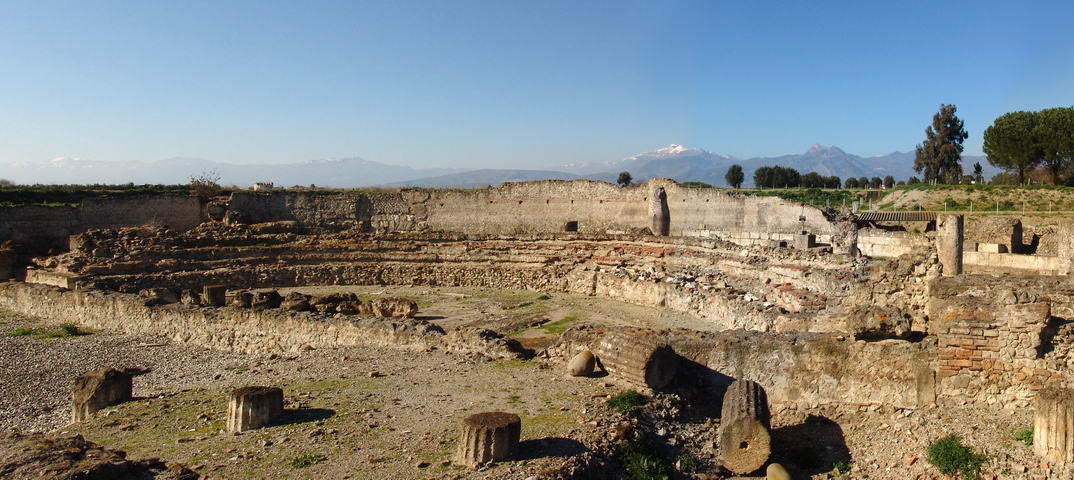
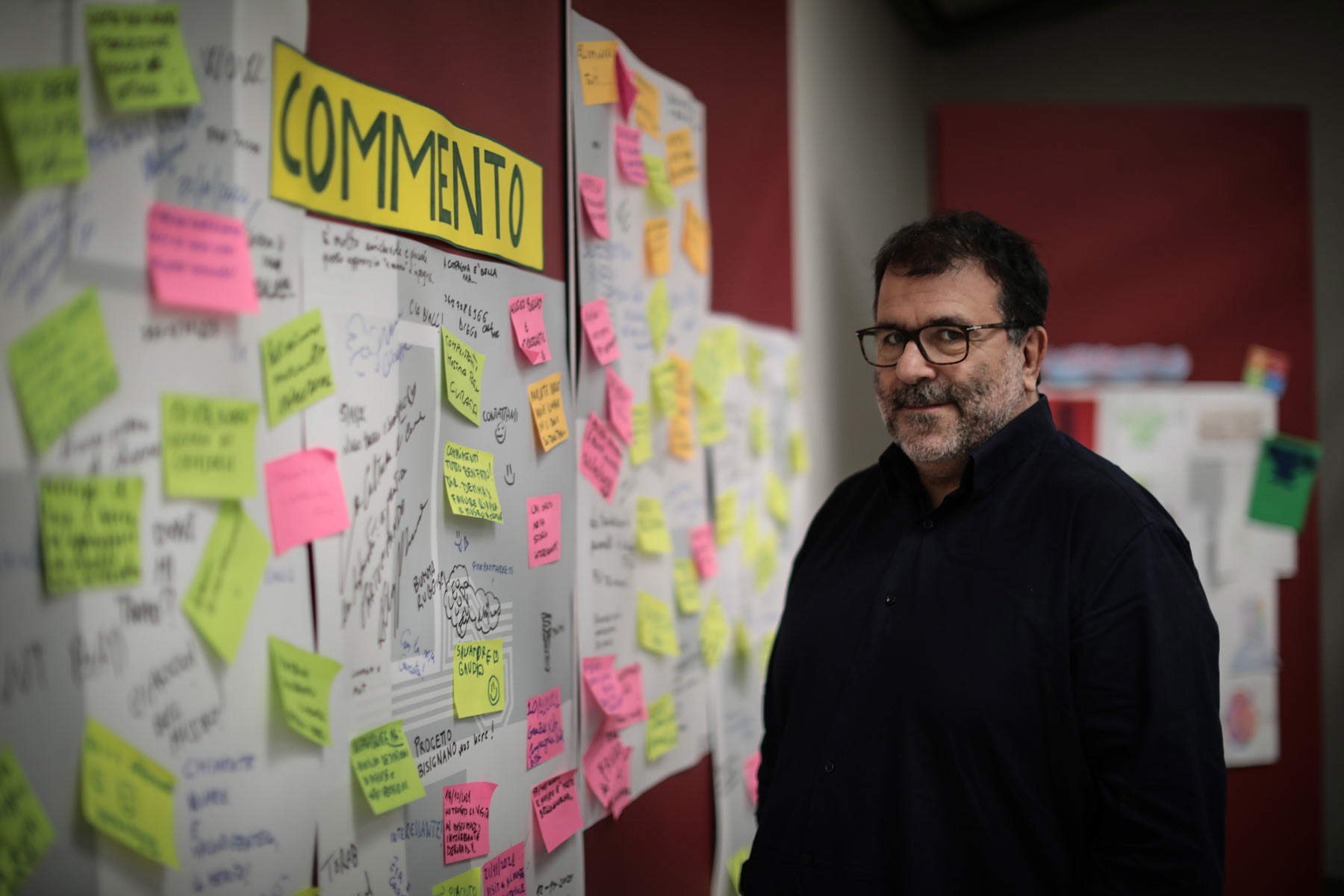
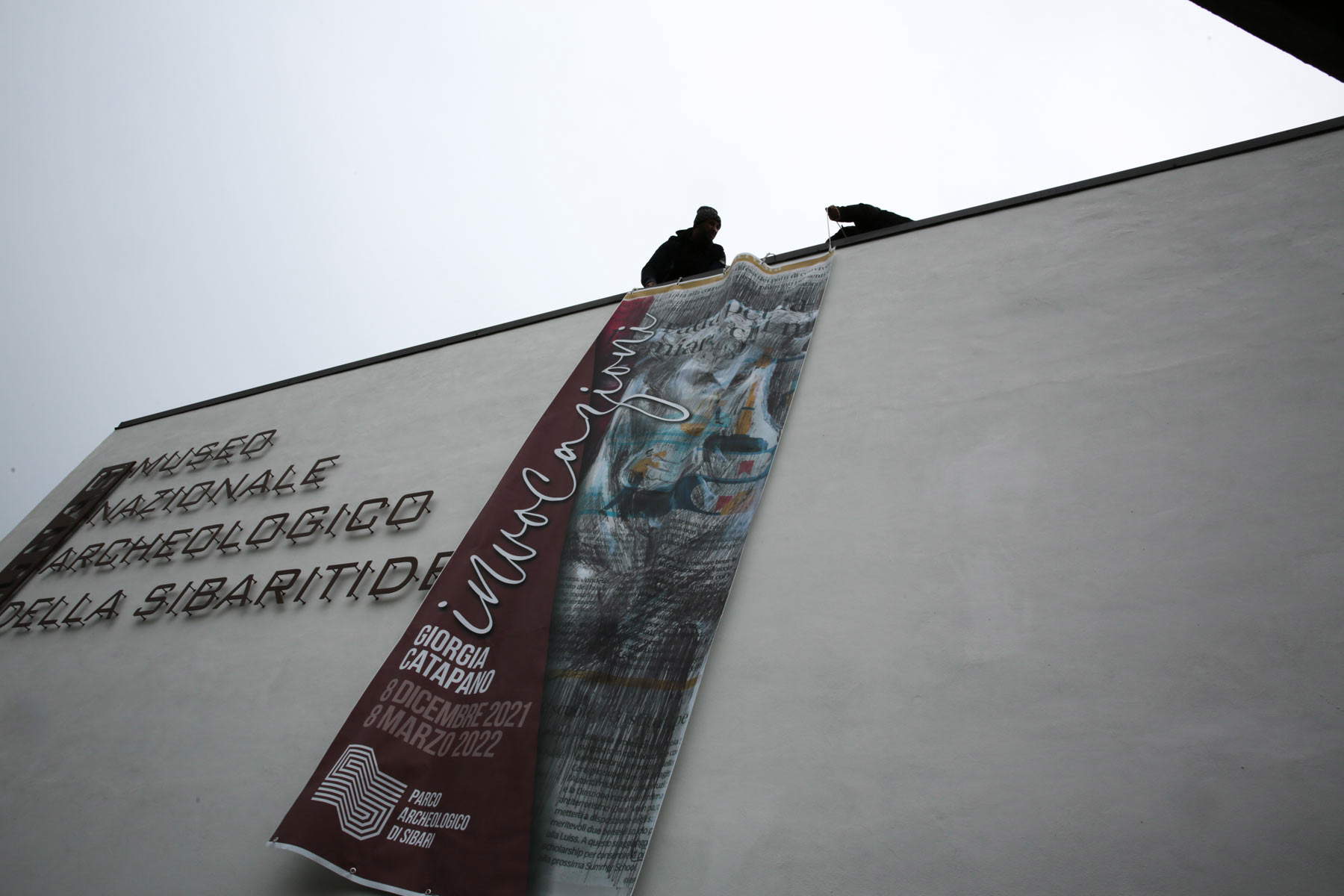
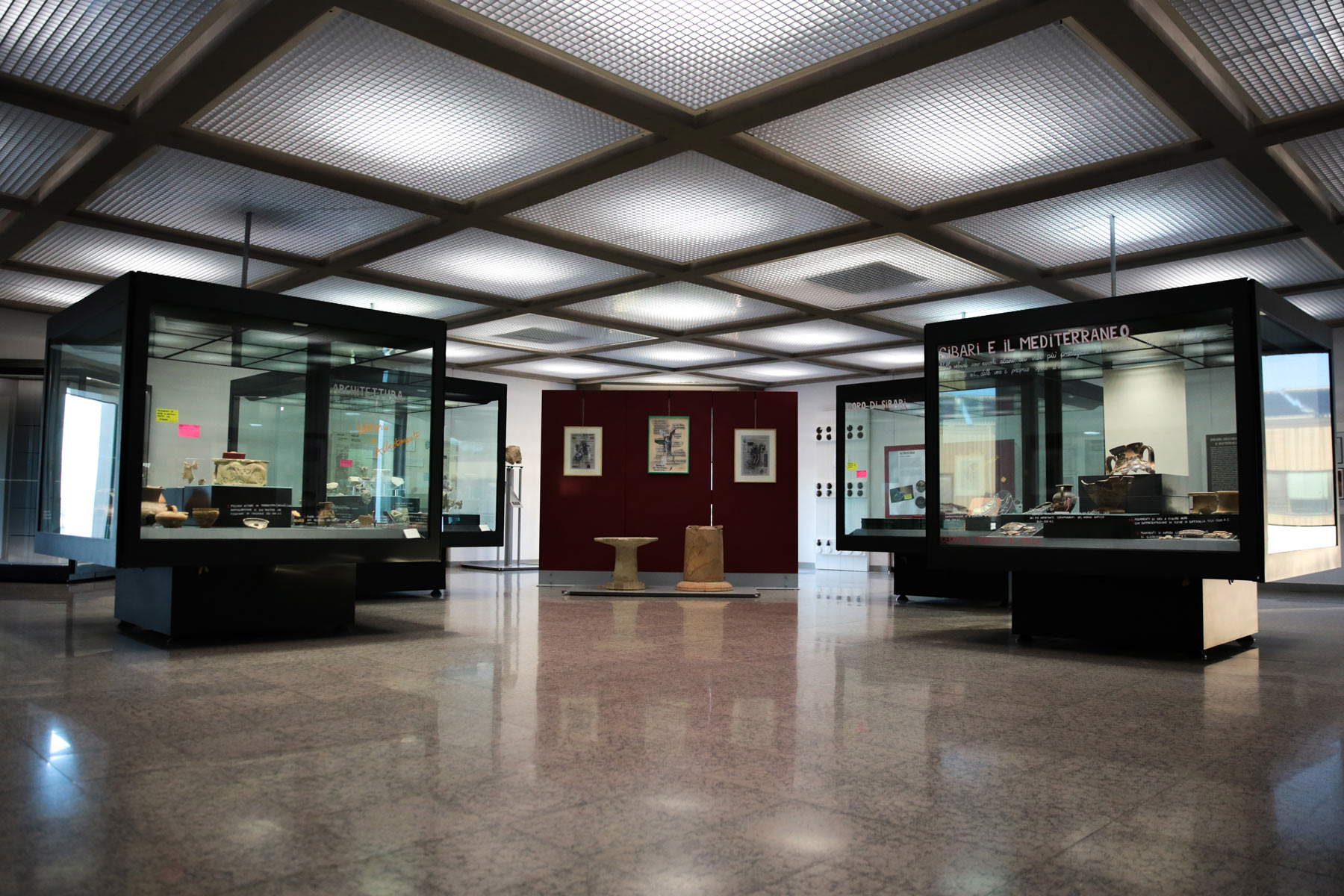
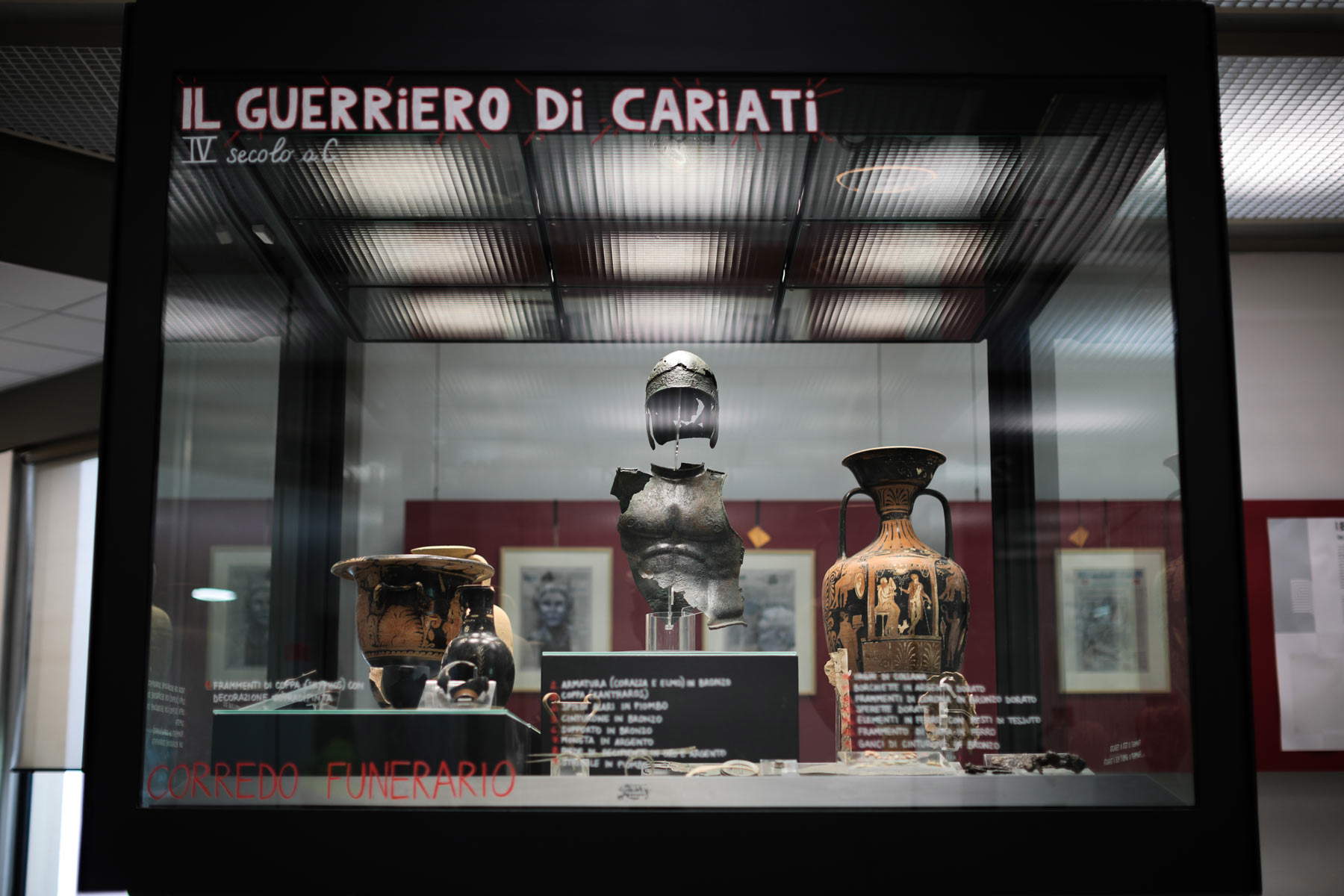
And this is the goal of the new layout, cool and temporary but taking into account updated museographic criteria of the Museum presented on December 8, 2021, the day on which a very impressive exhibition by artist Giorgia Catapano, Invocations, curated by Serena Guidone and Camilla Brivio, was also inaugurated. Thanks to a judicious use of technological means and in addition to the new Hippodamean module (with the opening of the multimedia room), the “millefeuille” soul (named after the cake, also known as Napoléon, which French tradition wants to have 3 layers) of Sibari, the city of veils and stratifications that have seen the millennia here, and certainly not without a blow! Devastation, flooding, the presence of Mafia gangs that still inhabit part of the 168 hectares of the Horse Archaeological Park: Sibari is a vast empire still to be controlled up to the borders. A crucial place to safeguard, to empower, to know.
When was the Greek polis born? It must be said at once that the vexata questio of the birth of the Greek city, in general, is “a phenomenon that cannot be defined in terms of a punctual event (the contours are very blurred) but rather of a progressive and slow transformation of Greek society since the collapse of the Mycenaean palaces,” what prompts aristocratic communities to give birth to the first forms of political aggregation, the polis, precisely.
We will not go that far, the topic, however, is useful to cursorily retrace one of the main stages of the new exhibition itinerary within the Museum and to get an idea of the terminus ante quem from which it is necessary to start in order to talk about Sybaris. In fact, there are numerous steps back that we should take, for example, to consider what the impact was on a territory inhabited by indigenous peoples upon the arrival of colonies from Achaia: the Greek region whose importance has only been rediscovered by recent excavations that have called into question the, hitherto dubious, ability of these settlers to found Sybaris and Croton, as was believed until recently to be the case, as a “region without cities before the sixth century BCE.C.” (Emanuele Greco). And how also to highlight the life of the Roman colony of Copia, whose vestiges are the most enduring and visible?
What seems unquestionable is that the arrival of new settlers in Thurii did not have to alter too much the urban layout conceived by Hippodamus of Miletus in the fifth century B.C. C. Instead, it was later, in the Augustan and Julio-Claudian ages, that the structure underwent a radical transformation (urban/topographical and monumental) with, for example, the construction of the so-called Hemicycle and the Rectangular Building. We also know, that the choice of this name, Copia, for the Romans, was “evocative of the ancient splendor of Sybaris and Thurii” (Alessandro D’Alessio and Carmelo Malacrino). A tribute to past splendors, in short. And therefore, how does one tell a story made up of centuries piled one on top of the other and by wide and indefinite chronological margins? These data are still to be reviewed, as Demma says, and will be the subject of study and research once the archaeological area has a more adequate security system. Also, what sources to start from in order to truthfully narrate the end of the city of Sybaris? Why and how did it happen?
Scholar Kukofka argues that “while Croton did receive occasional help from Dorieus, there does not, however, seem to be any solid documentary evidence to attribute the defeat of Sybaris to a great coalition aggregated against the powerful Achaean city and aroused by its own imperialistic policy.” There is, all in all, much yet to be verified and clarified, both about the “disappearance” or defeat of Sybaris and its origin. Will Sybaris always remain somewhere between myth and legend?
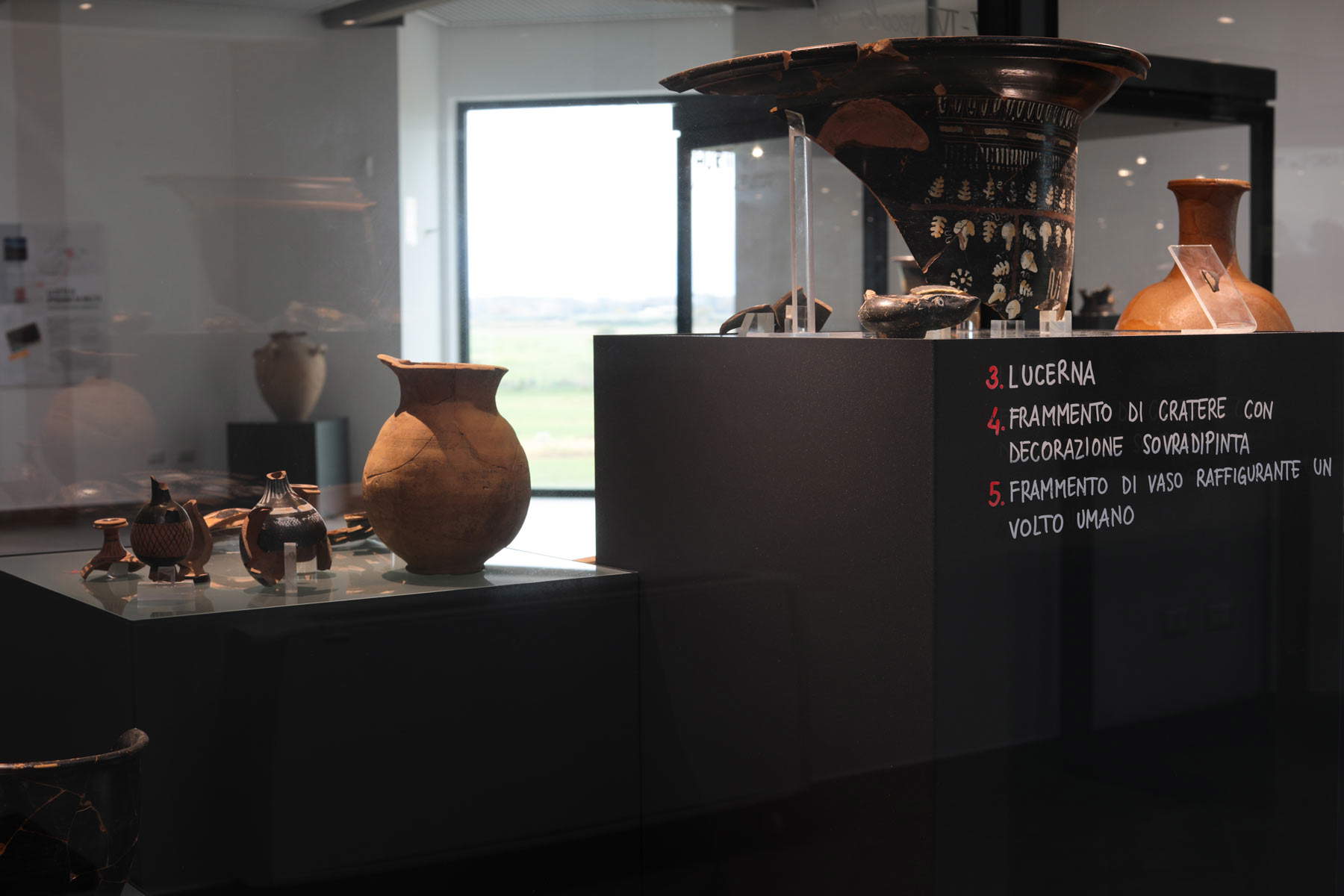
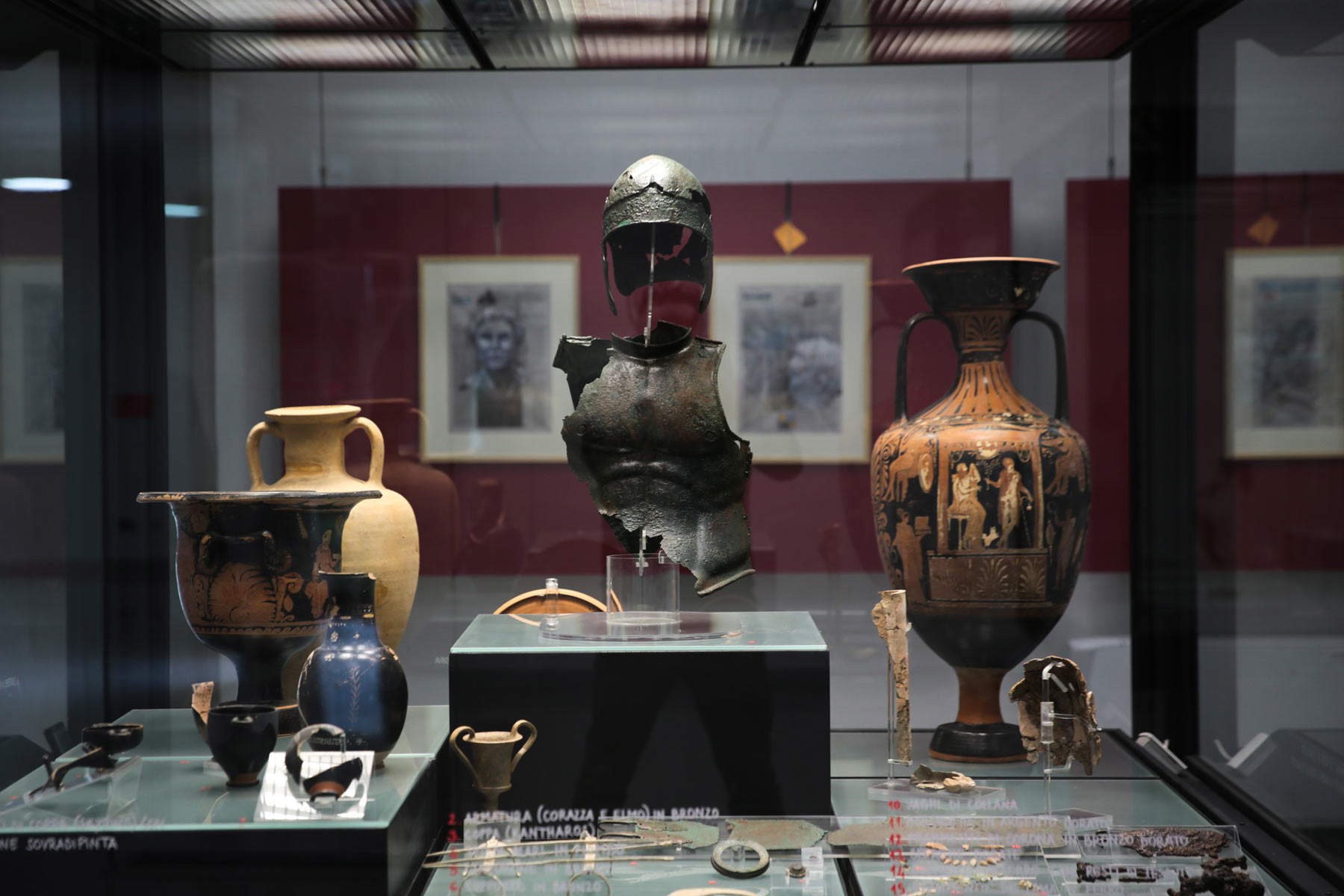
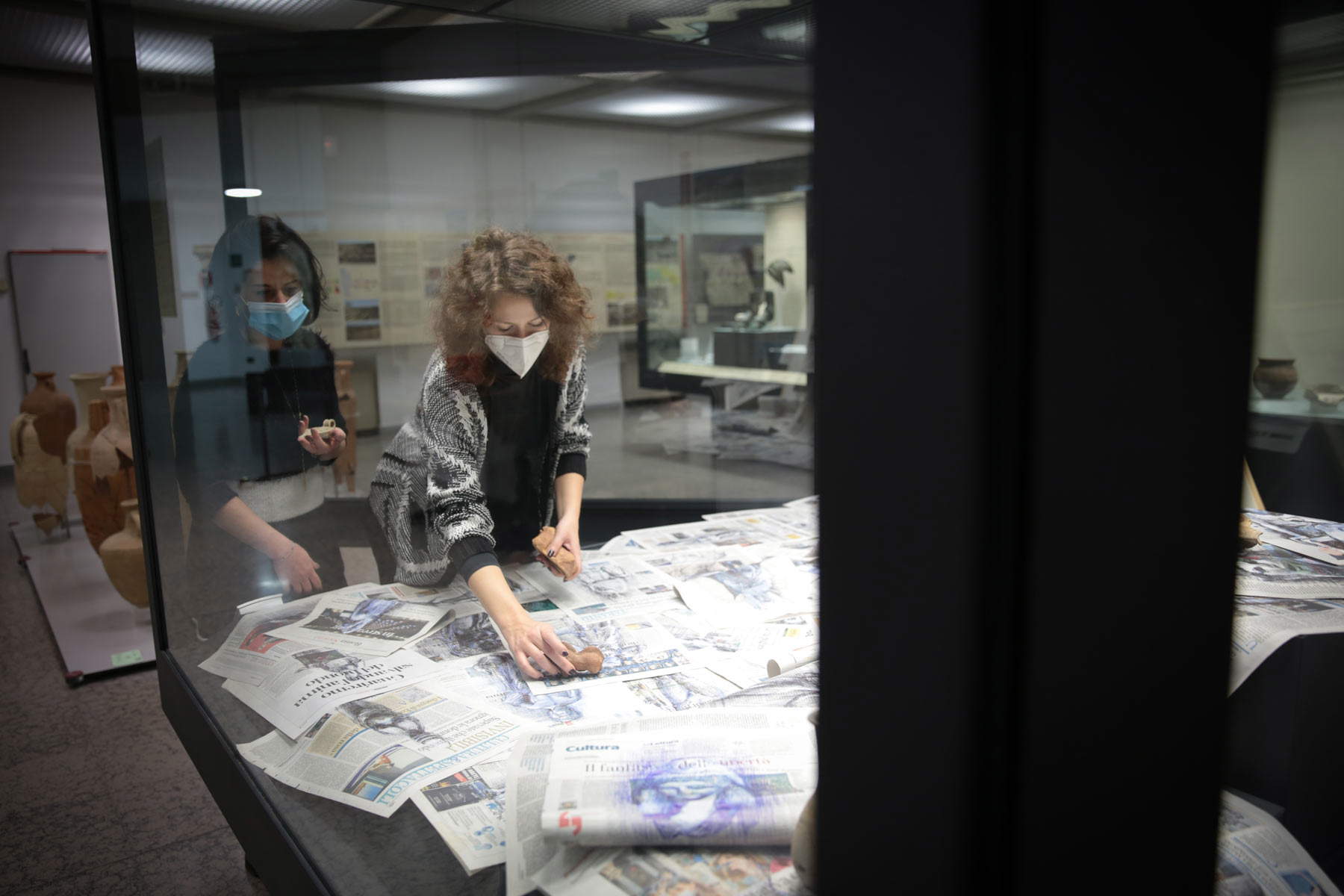
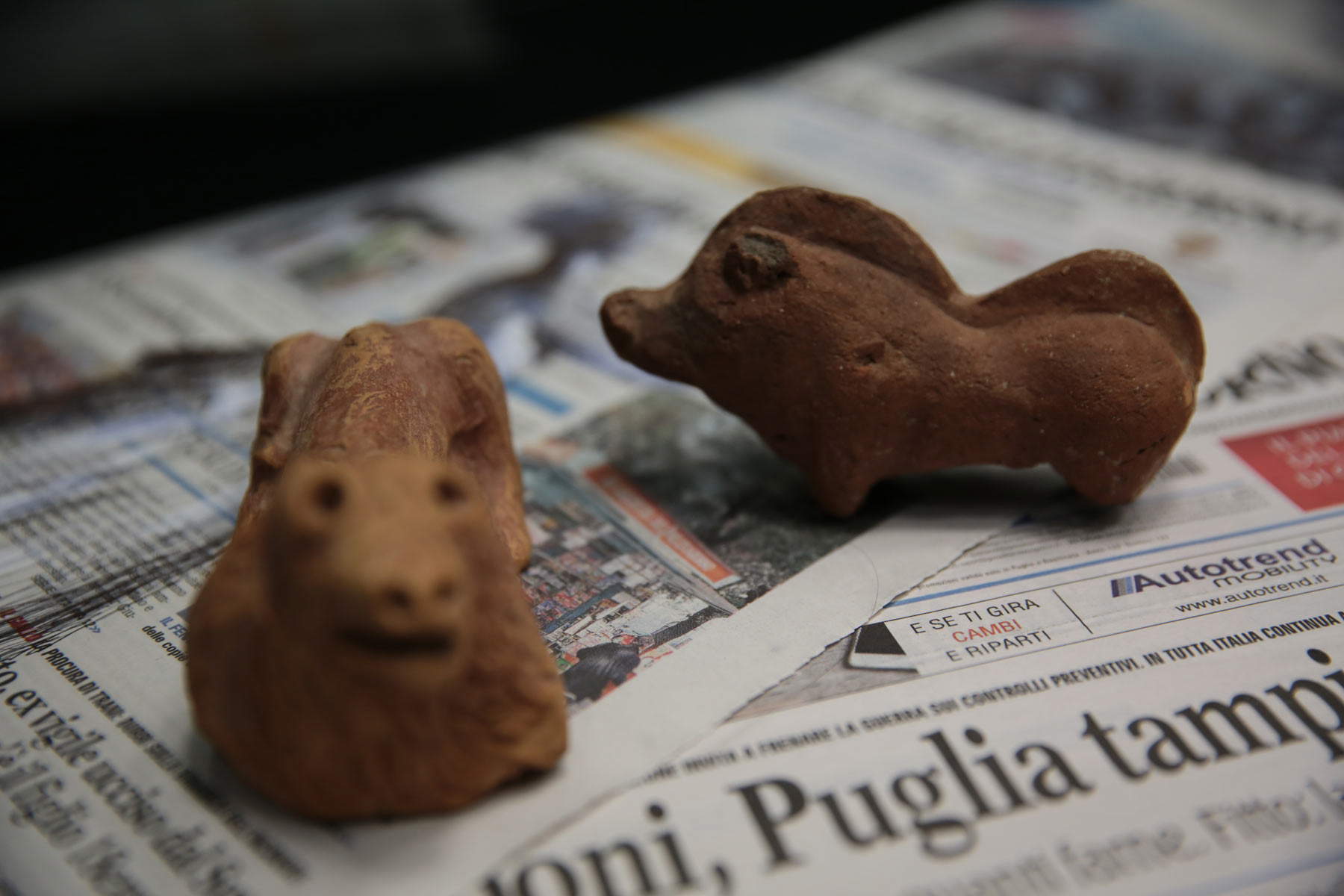
ADFS. What was the situation you found upon your arrival in Sybaris?
FD. There are many critical issues that we faced. Starting with the always inadequate staffing: you can count on the fingers of one hand the number of administrative employees who are in charge of managing the budget, the procurement office and communication, in addition to the difficulty of managing routine maintenance in the immediate future, since the surveyors who have retired, have not yet been “replaced.” There are several issues, the most important being the question of securing the excavations. Two of the water pumps, provided for by a 1965 project, have also blown up and are therefore unable to contain the water; they were, it is true, replaced, after the tragic flood of 2013, by a project for the construction of draining trenches, however, disregarded in its scientific value. And not only that, a naivety was accomplished: digging the said trenches, and then some never-maintained sumps, below the (plateiai) roads of Thurii and Copia thinking that they were perfectly overlapping. The mistake was to imagine that the pattern of the old city (of Thurii in all probability) exactly traced that of Sybaris!
What has he managed to accomplish in just a few months?
Since the beginning of my tenure (November 2020) we have been working on several fronts relentlessly. I have also directly solicited the General Directorate and Professor Osanna (whose doctoral studies begin with a study of the Greek colonies of the Ionian Arc), who in the exercise of his duties is providing to meet our most pressing needs. On the most urgent issue of securing, before my term of office, there was a ministerial inspection that ascertained a number of critical issues, after which I entrusted the task to carry out timely supervision and a precise master plan to a great expert (he is lecturer in Glasgow, and deputy director of operations for the project of the botanical garden of the emirate of Oman) who during the very first investigations found what he believed was most likely the origin of the water table from the ancient course of the Coscile. The river was parallel to the other Crati, and with it reached the sea making the plain of Sybaris like an “Ionian Mesopotamia” on which the city was later settled.
But at some point in its history the Coscile changed its course, flowing into the Crati. Part of the water, as a result of these upheavals, began an underground movement toward the sea, which had to lead today to the establishment of the present aquifer, located below the archaeological area. The project for the final solution of the problem is complex and several phases long and expensive, with a series of agreements also with the Ministry of Ecological Transition, but the securing of the archaeological area will be able to take place with an initial intervention already almost fully funded.
A compelling hypothesis that will be supported by further careful investigations?
Of course, a museum is above all a research center, a collector of many different experiences and skills. Once the operational emergencies are overcome, the museum will also open up to studies and conferences.
The museum lives in a difficult and out-of-the-way area, so how can it be boosted to make a real impact on culture and tourism?
Through a series of initiatives that make it easier for users to travel and stay, and first and foremost through a shared pact with the communities that must be called upon to design a future for this land together. You still cannot limit the tourism offer exclusively to the very few weeks of summer. With this openness in mind, we are also systematizing two specific projects. One is to create an integrated cultural offer that includes a strong enhancement of all the civic museums and the other, of a Network of Magna Graecia Museums that will involve in a first phase Crotone, Sybaris and Metapontum, all sites that border the blue highway, the Ionian Sea. This is how ruins, including archaeological ones, become the pick to make culture and beauty a shared action that can redeem Sybaris and all of Calabria.
Warning: the translation into English of the original Italian article was created using automatic tools. We undertake to review all articles, but we do not guarantee the total absence of inaccuracies in the translation due to the program. You can find the original by clicking on the ITA button. If you find any mistake,please contact us.